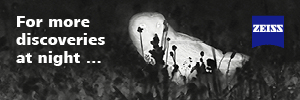- Herpsilochmus gentryi
Identification
10-11 cm
Underside and side of head yellowish, upperside with dark grey base color but wings covering most of the upperside have extensive white edges on flight feathers and white tips on covert producing 2-3 wing bars.
Distribution
South America: found in extreme south-eastern Ecuador and northern Peru.
Taxonomy
Monotypic.[1]
Habitat
Moist sandy soil lowland forests below 200 m asl.
Behaviour
Food preference poorly known but likely smaller invertebrates. Often joins mixed species flocks where using the upper levels of the trees and the thinner branches and leaves for foraging.
References
- Clements, J. F., T. S. Schulenberg, M. J. Iliff, T. A. Fredericks, J. A. Gerbracht, D. Lepage, S. M. Billerman, B. L. Sullivan, and C. L. Wood. 2022. The eBird/Clements checklist of Birds of the World: v2022. Downloaded from https://www.birds.cornell.edu/clementschecklist/download/
- Avibase
- Zimmer, K., M.L. Isler, and C.J. Sharpe (2020). Ancient Antwren (Herpsilochmus gentryi), version 1.0. In Birds of the World (J. del Hoyo, A. Elliott, J. Sargatal, D.A. Christie, and E. de Juana, Editors). Cornell Lab of Ornithology, Ithaca, NY, USA. https://doi.org/10.2173/bow.ancant1.01
- Schulenberg, T. S. & Stotz, D. F. & Lane, D. F. & O'Neill, J. P. & Parker III, T. A. & Egg, A. B. (2010). Birds of Peru: Revised and Updated Edition. Princeton: Princeton University Press. ISBN 978-0691130231
- Wikipedia
Recommended Citation
- BirdForum Opus contributors. (2024) Ancient Antwren. In: BirdForum, the forum for wild birds and birding. Retrieved 23 April 2024 from https://www.birdforum.net/opus/Ancient_Antwren
External Links
GSearch checked for 2020 platform.1




